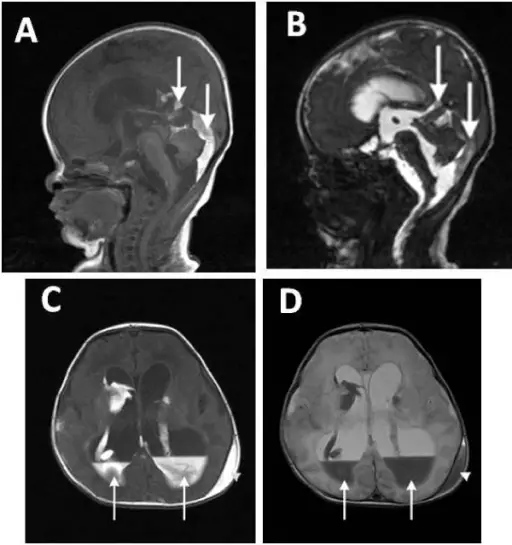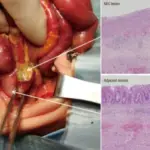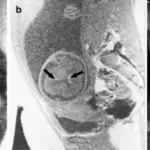An intraventricular hemorrhage is bleeding into the fluid-filled areas, or ventricles, surrounded by the brain in new born babies. The condition is most often seen in premature babies, and the smaller and more premature the infant.
What is the Pathology of Intraventricular Hemorrhage?
The pathology of intraventricular hemorrhage is:
–Etiology: The cause of intraventricular hemorrhage is a lack of oxygen to the brain, due to a difficult or traumatic birth, or from complications after delivery. Bleeding can occur because blood vessels in a premature baby’s brain are very fragile and can rupture easily which allows blood to escape from the vessels and pool into abnormal spaces.
–Genes involved: Factor V Leiden, methylenetetrahydrofolate reductase gene (MTHFR) variants, prothrombin 20210G>A variant.
–Pathogenesis: The sequence of events that lead to an inherent fragility of the germinal matrix vasculature may be susceptible to hemorrhage. Fluctuations in cerebral blood flow may induce rupture of vasculature. If there are associated platelet or coagulation disorders, the homeostasis mechanisms are impaired which might worsen the hemorrhage.
–Morphologic changes: The morphologic changes involved with intraventricular hemorrhage are accumulation of blood within the cranial vault which may occur within the meningeal spaces, or within the brain parenchyma. Hemorrhage within the meninges or the associated potential spaces, including epidural hematoma, subdural hematoma, and subarachnoid hemorrhage occur.
How does Intraventricular Hemorrhage Present?
Patients with intraventricular hemorrhage are typically male gender smaller and more premature. Half of this disease pccurs in first 6 hours of life. The symptoms, features, and clinical findings associated with intraventricular hemorrhage include: apnea, slow heart rate, anaemia seizures, poor feeding and irritability. Vaginal delivery, low Apgar score, severe respiratory distress syndrome, pneumothorax, hypoxia, hypercapnia, seizures, patent ductus arteriosus, infection, and others seem to increase primarily the fluctuations in the cerebral blood flow and thus, represent important risk factors to the development of disease.
How is Intraventricular Hemorrhage Diagnosed?
Intraventricular hemorrhage is diagnosed by ultrasound imaging of the head, perhaps a head CT, and blood tests to check for anemia, coagulopathies, blood type and screening, and infections.
How is Intraventricular Hemorrhage Treated?
Intraventricular hemorrhage is treated symptomatically. There is no current therapy to stop the bleeding. Symptomatic treatment like blood transfusion may be given to improve blood pressure and blood count.
What is the Prognosis of Intraventricular Hemorrhage?
The prognosis of intraventricular hemorrhage is good. Mortality of intraventricular hemorrhage is less than 10% in infants. Bleeding in the brain can put pressure on the nerve cells and damage them. If the nerve cells are severely damaged, it can result in irreversible brain injury.



